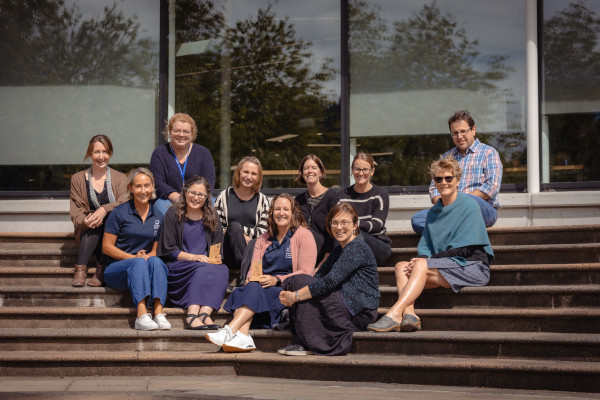- Tūhono home Hoki ki Tūhono
-
- Staff Directory
- Chief Executive Office Auckland International Office Corporate Services Finance Campus Services Functions and Catering Information Systems and Support Marketing, Communications and Engagement Learner Journey Academic Registry International Learner Services Te Punaka Ōwheo
- Learner Experience Academic Excellence Central Campus College of Community Development and Personal Wellbeing College of Engineering, Construction and Living Sciences College of Health College of Work Based Learning Open Education Resource/OERu Research and Postgraduate Studies Te Maru Pumanawa | College of Creative Practice and Enterprise
- Māori Development and Kaitohutohu Office People, Culture & Safety People and Culture Childcare Centre Te Ama Ako | Learning and Teaching Development Wellbeing and Safety Auckland Staff Directory Executive Office Academic Corporate Services Marketing and Business Development Human Resources Campus Quality and Programme Development
-
 Our people make a better world
Our people make a better world
We build the capabilities of individuals, organisations and communities and help them to realise their potential.
Staff Directory
-
- Tools
- Academic Integrity Declaration Form AIC Applications Dashboard Approved Programmes Approved Programme Fees Centralised Assessement Repository Chemwatch CMS - Tūhono & StudentHub updates Course Evaluation and Surveys CRM Applications CRM customer service hub Delegations policy/process Disability and Neurodiversity Dynamics 365 (CRM) EBS Ontrack EBS Report Email Security Personal Portal Employment Matters / Solarworkplace eTaxi eTV
- Financial Variance Reporting Hidden Disabilities Sunflower programme FCM travel intranet InPlace International entry requirements Knowledgebase articles Learner Capability Learner Support Dashboards Linkedin Learning Log a job with Marketing Login as an applicant Microsoft 365 Moderation App Moodle OP Docs OP Docs - Publishing OP Image Libraries Performance Excellence Portal Product Evaluation Panel
- Policy Library Privacy Programme and Course Design and Development Qualtrics XM RDS Remote Access Support Portal Research Database Robertson Library Staff FAQs about Graduation Status of Programmes Student Hub (Kāpehu demonstration view) Study Abroad info for learners Te Whare (Te Pūkenga intranet) Tūhauora I Wellbeing resources Uniprint Vault Webexpenses Auckland Tools
-
 Vault
Had an accident or near miss?
Log it here
Vault
Had an accident or near miss?
Log it here
-
- Communities
- Community AI Steering Committee Ally Network EBS Community of Interest EdTech Champions Health & Wellbeing Research Internal Evaluation Neurodiversity Professional Team Professoriate Proud@OP Student Support Website Advisory Group Web Champions Working under the Rainbow Project Learner Capability Trade Training Centre
- Committee Academic Committee Animals@OP Diversity and Equity Doctor of Professional Practice Committee Kaunihera Whakahaere - Leadership Council Internal Evaluation Learning & Teaching Leadership Team Library Committee Mental Health and Wellbeing Advisory Group Otago Polytechnic Board of Directors Pastoral Care Code Committee Programme Approvals Committee Research and Postgraduate Committee Research Ethics Committee Staff Subcommittee
- Think Tanks Mātauraka Our learners achieve educational success Pūtea Our financial success Tākata Our people, our team, our community Tiriti Our active commitment as a Treaty partner Tūroa Our commitment to be a sustainable and responsive organisation
-
 Create a community
Create a community
Do you have a community, committee or project that you'd like represented here?
Communities
-
- About OP
- Keep up to date All news All events All notices All blogs Share your info Create a news article Create an event Create a notice Create a blog
- Community and Partnerships Alumni and friends Education Foundation Operational information Academic calendar 2025 Academic calendar 2026 Current vacancies Dunedin campus map Our policies Te Whare (Te Pūkenga intranet) Topical FAQs
- Who we are Commemorative sites Māori Strategic Framework Our history Our strategic priorities Pasifika Strategic Framework (2025-2030) Vision and Values Working for us OP job opportunities Wellbeing Calendar Working at OP
-
New Zealand: 0800 762 786
contact us
International: +64 3 477 3014
How do midwives and obstetricians communicate at the primary/secondary interface?
Author: Rachel Cassie
How do midwives and obstetricians communicate at the primary/secondary interface?
Rachel Cassie
13 December 2019
Abstract
Interprofessional communication is a critical component of safe maternity care. The literature reports circumstances in New Zealand and overseas when interprofessional collaboration works well between midwives and obstetricians as well as descriptions of unsatisfactory communication between the two professions.
This qualitative research focused on communication between community based LMC (lead maternity carer) midwives and public hospital obstetricians/registrars at a New Zealand District Health Board. The objectives were to define effective collaboration from research participants’ perspective, to identify barriers and challenges to good communication, to generate proposals to foster positive collaboration, and to explore participants’ understanding and use of the Guidelines for Consultation with Obstetric and Related Medical Services (Referral Guidelines).
Eight primary care midwives, three obstetricians and two obstetric registrars were interviewed about their interactions at the primary secondary interface and their understanding of and use of the Referral Guidelines. The theoretical perspective was Appreciative Inquiry and data was analysed using thematic analysis. Results indicated usually positive interprofessional interactions. Participants valued the Referral Guidelines but also reported some limitations to their applicability.
Dominant themes that emerged were the need to negotiate differing philosophies, to clarify blurred boundaries that sometimes led to lack of clear lines of responsibility, and the importance of three-way conversations. When three-way communication between midwife, obstetrician/registrar and woman occurred effectively, communication was usually optimal. Three-way communication was pivotal in negotiating philosophical difference and clarifying blurred boundaries. The research findings lead to recommendations on promotion of optimal communication.
Rachel Cassie's thesis was supervised by Jean Patterson, Christine Griffiths and George Parker.
License
This thesis is available under a Creative Commons Attribution-NonCommercial-NoDerivatives licence CC BY-NC-ND 4.0 International.

